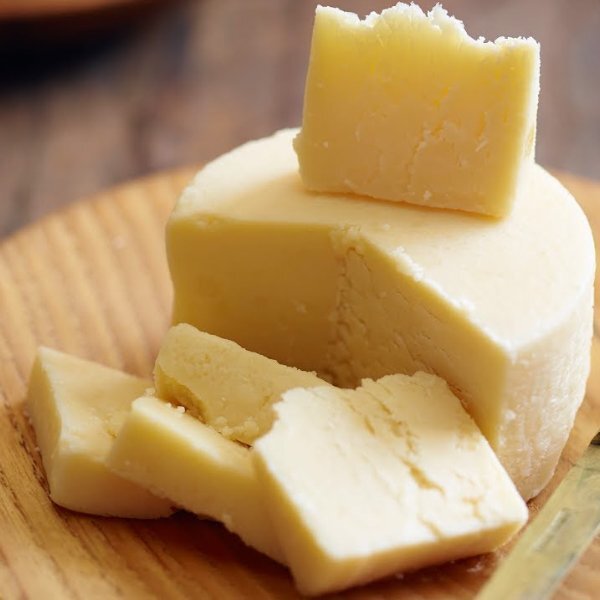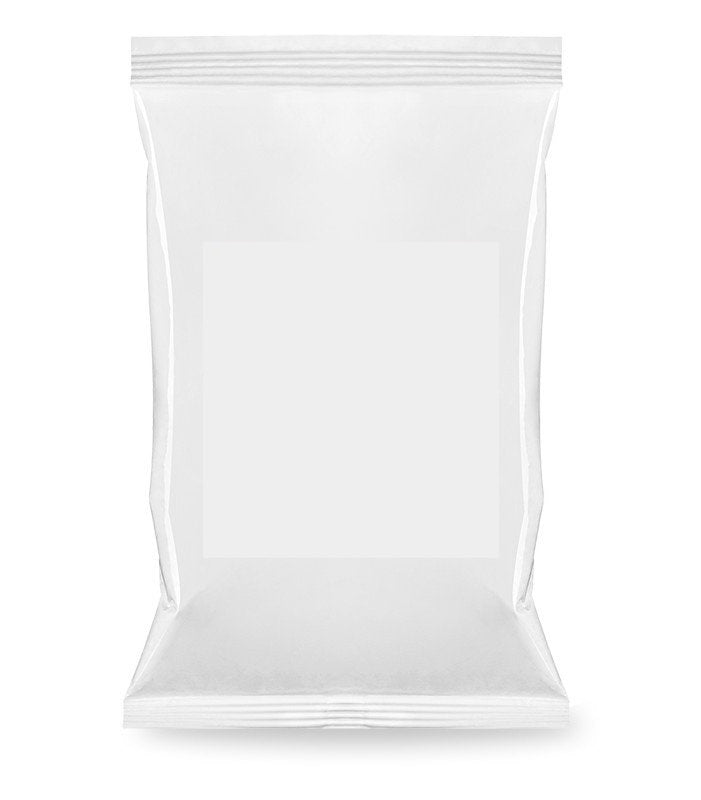BULGARIAN KASHKAVAL CHEESE STARTER makes 1 kg of cheese
BULGARIAN KASHKAVAL CHEESE STARTER makes 1 kg of cheese
Couldn't load pickup availability
Our Bulgarian Kashkaval (soft yellow cheese) starter makes an exquisite kashkaval.
Creamy and soft with that je ne sais quoi taste that this typical Bulgarian kashkaval has.
Kashkaval is a type of soft yellow cheese indigenous to Bulgaria. It
is very similar to the cheddar types of cheeses but has a very specific
taste and a great aroma thanks to the presence of lactobacillus
bulgaricus lactic acid bacteria.
Each pack contains freeze-dried live active lactic acid kashkaval
starter cultures. Since the bacteria is grown on organic dried milk
powder, the pack also contains a minute (very small) quantity of dried
organic milk powder, which is completely consumed by the bacteria during
fermentation.
Storage
Best to store in the FREEZER.
Use by the date indicated on the label.
Bacillus Bulgaricus starters are shipped in sealed sachets.
Transporting the packs (i.e. shipping them
to you) at ambient temperatures (even in the warmest climates) is
perfectly OK and will not damage the live cultures. We use a
freeze-dried process that keeps the strains alive and comfortable even
during long trips in hot weather.
Once you receive your starter packs – pop them in the freezer for best storage.
Unfreezing the starter packs and freezing them again (e.g. when using only a portion) is OK to do, even multiple times.
It is easy to make Bulgarian kashkaval using Bacillus Bulgaricus Kashkaval starter culture.
It only takes a few easy steps to make your own soft yellow kashkaval cheese.
You can use any kind of milk you want — cow’s, sheep’s, goat’s, skim,
whole, raw, pasteurized, dairy (unfortunately this does not work with
non-dairy milk), it will make some great kashkaval! Just avoid using
ultra-pasteurized or UHT milk because the taste of your kashkaval won’t
turn as good. For best results, we recommend using whole milk.
The instructions below are for treating 4 litres (1 gallon) of milk
so you need to adjust them accordingly for other quantities. 4 litres (1
gallon) of milk to make about 800 grams (1.6 lbs) of soft yellow
(kashkaval) cheese.
Ingredients and utensils that you would need
- 4 litres / 1 gallon of milk
- 4 packs of the kashkaval starter culture (it’s best to use the entire
pack so make sure you have a pack for the volume of milk you are
treating) - 1/4 teaspoon liquid animal rennet diluted in 1/4 cup cool non-chlorinated water – the rennet is sold freely in stores
- 1/4 teaspoon liquid calcium chloride diluted in 1/4 cup cool
non-chlorinated water – the CaCl2 is sold freely in stores. In general,
the calcium chloride solution has to be in the same amount as the rennet
solution (and the dilution is 1:10, where 1 part is the CaCl2 or rennet
and 10 parts are water). These are just guidelines, you can experiment
to see what proportions work best for you - cheese mold (this is where you will shape and brine the cheese, basically any container would do)
- salt, kosher is best but any kind works too
- a basic kitchen pH meter to measure the pH of the curd and the whey with
- a quick-read thermometer – can do without but it’s always handy to have one
Preparation
-
Prepare the milk:
Heat the milk to 165-172°F (74-78°С). This is done to kill any existing
bacteria in it, which could react with the Lactobacillus Bulgaricus
culture. Cool the milk down to 93-97°F (34-37°C). If you are using UHT milk, no need to heat the milk. Bacteria already has been killed. Just cut open the top of packet. -
Culture the milk:
Add the starter culture to the milk. Let it hydrate for 5 minutes, then
stir it into the milk using a gentle up-and-down motion to distribute
thoroughly. Leave to work for about 30 minutes stirring occasionally.
Add the diluted solution of calcium dichloride and stir it into the milk
slowly for about 2-3 minutes. Add the rennet in tiny squirts while
continuing to stir, stir for another 3-5 minutes. Cover the container
and let it sit for about an hour. At this point the milk should have
transformed into a sold mass of curd surrounded by liquid whey. The milk
would be set at this point but it won’t be very firm — try pushing it
inside from the container using a spoon or a knife. The separation
should be fairly clear. If the line of separation is still blurry,
re-cover the pot and let it sit for another 15 minutes then test again. -
Process the curds:
Cut the curd into 0.5 inch (1cm) squares using a knife. Try to cut so
that pieces are more or less the same size. Then let them sit for
another 5 minutes. This helps more whey to separate. Now you need to
slowly heat the container with the curds. The temperature should rise by
1 degree every 5 or so minutes. Begin heating, while stirring the curds
and whey, slow and steady raise the temperature to 95-98°F (35-38°C) in
10 minutes. Then continue heating even slower getting to 104-108°F
(40-42°C) in 20 minutes (total heating time is 30 min). Now let sit at
this temperature 104-108°F (40-42°С) until curd is pH 5.6-5.7 (about 2
hours). -
Drain and cheddar the kashkaval:
Next we need to drain the curds. At the end of the previous heating
step you should have curd grains settle in the bottom of the vat. Now
drain all the whey but save it as you will need it later. Press the
curds together in a block to form doughy mass, while draining excessive
whey. Drain them for another 1 to 2 hours removing whey as it separates.
Now comes the cheddaring part. For this you need to leave the curd
block in a colder place (about 68-72°F or 20-22°C) to ripen until it pH
reaches 5.2-5.3. This usually takes anywhere between 2 and 10 hours —
you may simply leave it overnight. The curd should be now ready to
stretch into shapes. Do a stretch test to determine if it is — take a
few small pieces of curd and immerse them in 170°F water for a few
minutes, then knead them together for a few seconds and check if you are
able to pull the curd into a shiny string. If the curd is not ready
then you can warm it up again to renew the bacterial growth and lower
the pH. -
Stretch and shape the kashkaval:
Next we shape the kashkaval. This is done in a hot bath. Cut the curd
block into thin strips and place them in hot brine — 165-170°F (72-75°C)
made of water and 16-18% NaCl, then cook them for 3-5 minutes. Take
them out, roll them together and gently knead them to form a homogeneous
mass. If the pieces don’t stick together well, dip them into the hot
brine for another 2-3 minutes. After kneading for a while and when you
have achieved a smooth and shiny surface, transfer the curd dough to a
mold (any container will do). Really press it down, it should be
homogenous at this point. Now you need to cool the shaped cheese curd.
There are two ways of doing it – cool it immediately in a cold water
bath (50-60°F or 10‑15°C) for about 40-60 minutes or leave it to cool on
its own overnight in a cool (54-64°F or 12-18°C) place. -
Salt and preserve the kashkaval:
Again there are two ways to salt the kashkaval — try them both and see
which one you like better. Dry salting — dry salt the kashkaval on the
surface and leave at a cool room temperature of 54-60°F (12-16°C) for
two days, then wipe the kashkaval and salt again, repeating the process
for about 20 days. Brine salting — prepare brine of water and salt (18 ‑
20%) while heating it up to 167-176°F (75-80°C), then cooling it down
to 50-60°F (10-15°C). Place the kashkaval in this brine for 2 hours.
Then add a spoonful of lemon juice (or a pinch of citric acid) to the
brine, dilute it more with water and use this brine to store the
kashkaval for a week in your fridge at around 40°F or 4°C.
Done! Your kashkaval is ready to be enjoyed!
Share




